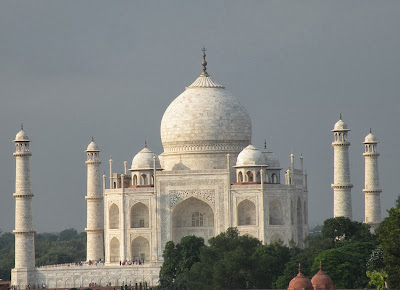 |
| Tajmahal,Agra |
“.......... a drop of tears,
On the cheek of time, dazzling and white,
This Tajmahal”
from the lines of poem “ Shahjahan” by Rabindranath Tagore
I was awestruck by the first sight, and charmed by the unique manifestation of love. Tajmahal was in front of me, doused in soft warmth of the Sun and adorned in the glistening snow white crown, like a grand celebration of love. I was gleefully stared at the spectacular Tajmahal, the heavenly creation on earth. Tajmahal, where a flawless painting on a huge structure of white marble has been interlaced the ever green symbol of love and romance of Emperor Shah Jahan. The spectacular result of 22-years hard work of an assemblage of finest artisans mingled their exquisite creativity with the doleful shades of an emperor in memory of his beloved wife.
 |
| Tajmahal,the poem of love on white marble |
History has numerous examples of ruthless bloodsheds but, the Tajmahal is an exception to introduce us with the humane qualities of an emperor rather than his achievements as a warrior. It is the finest example, where love has achieved an overwhelming success over the fury of blood sheds. I felt the symbol of eternal love through its speechless presence was saying-“at last love rules.”
 |
| droplet of tear on the cheek of eternity,Tajmahal |
“Tajmahal” the expression of deepest heartfelt pain of an emperor to depart from his beloved wife is portrayed in the architectural wonder on the bank of Yamuna. It is perhaps the greatest single building on earth designed to house the human remains. Built by Mughal emperor Shahjahan in memory of his beloved wife Mumtaj after her death in 1631 and Shahjahan was buried by his son Aurangzeb beside Mumtaj after his death in 1666. Entirely built of White marble and based on Persian architecture, the architectural design known as interlocking arabesque has been used in construction. Each element of the structure can stand on its own and integrate with the main structure. The Tajmahal was named a United Nations World Heritage site in 1983.









